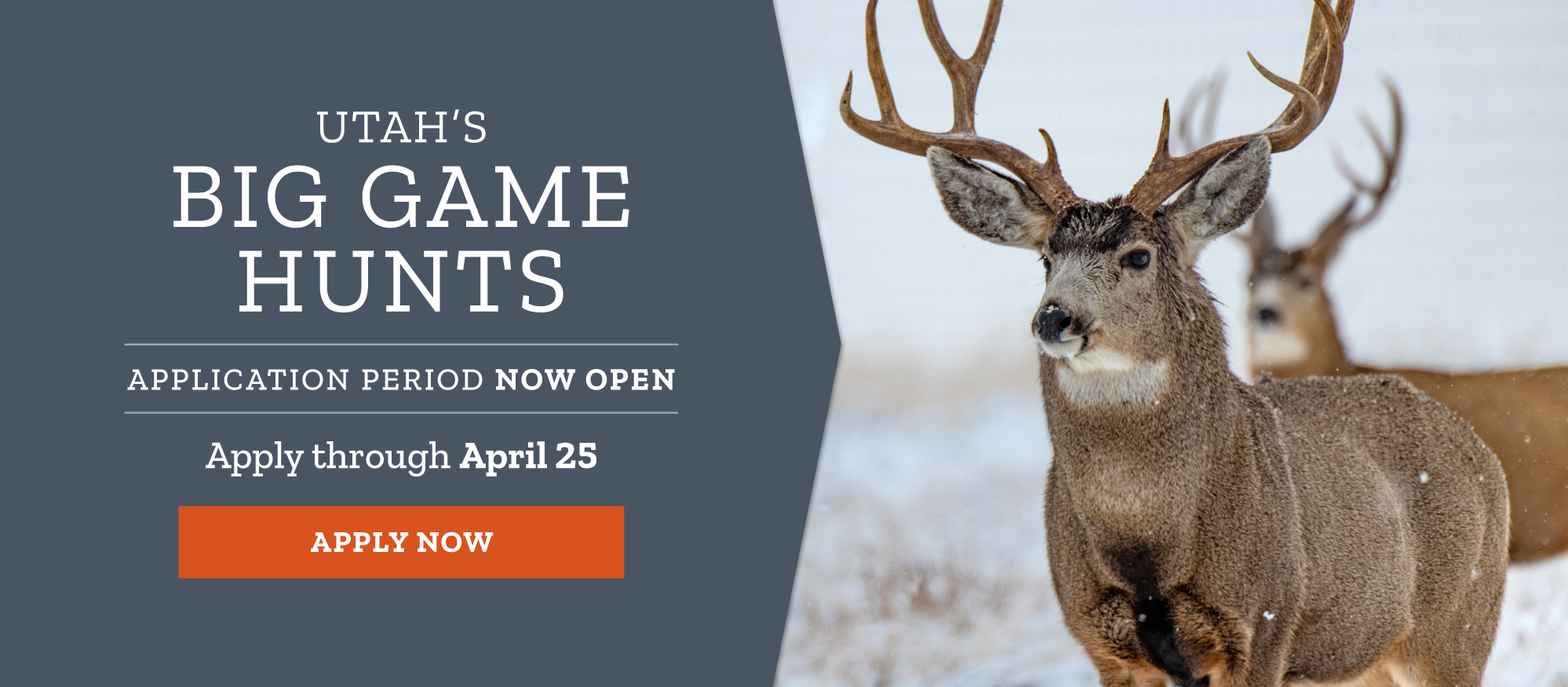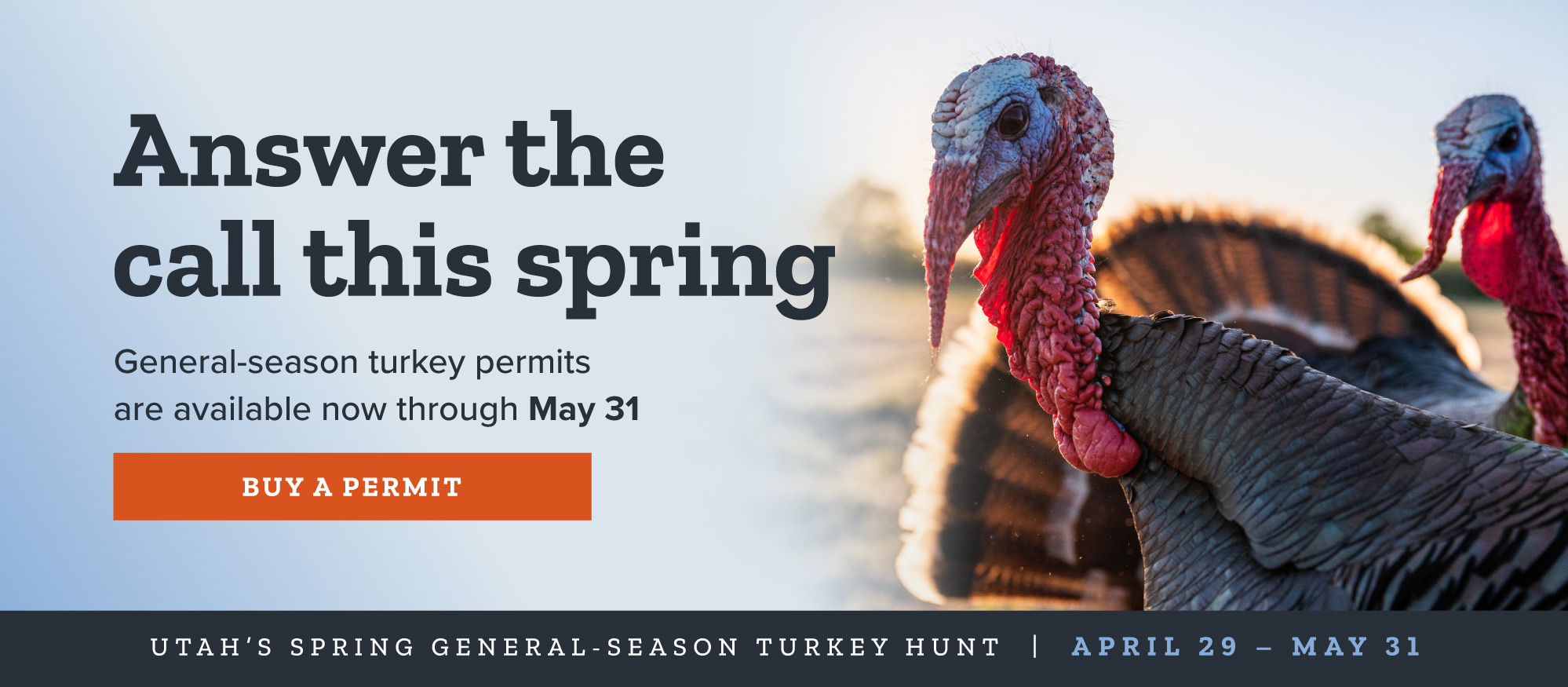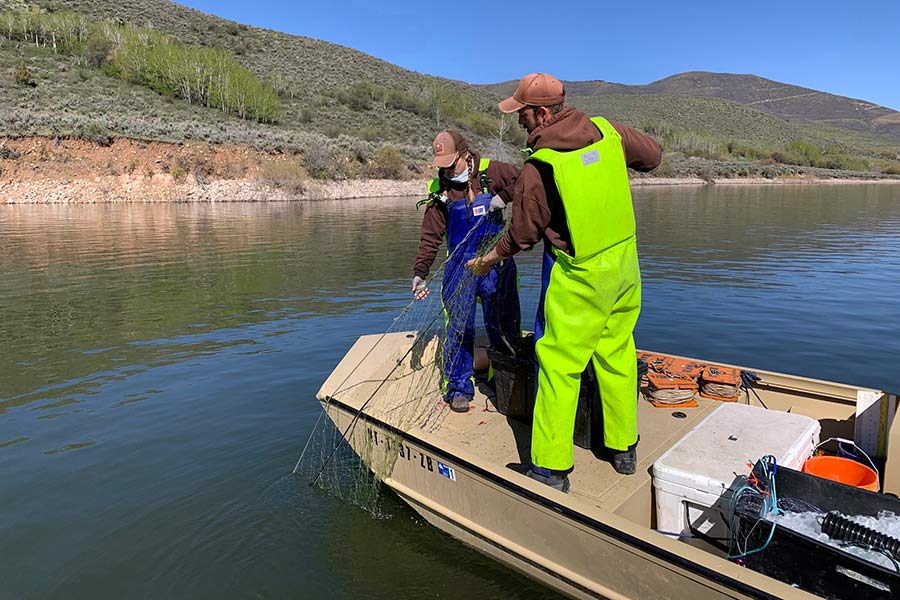Catch some cash with your fish
Learn about Utah's fishing surveys — including cool new tools and programs — and see how you can help improve your favorite fisheries.
By Randy Oplinger
DWR Sportfish Coordinator
Nobody likes a lousy day of fishing. As a biologist, I consider myself informed about where I can go fishing in Utah, and I know which waters have lots of fish or large fish. Does that mean I never have a lousy fishing trip? Definitely not.
I catch zero fish on a good number of fishing trips and, as a whole, consider myself a pretty average angler. So, I don't think that being a fisheries biologist gives me any kind of remarkable advantage when I go fishing.
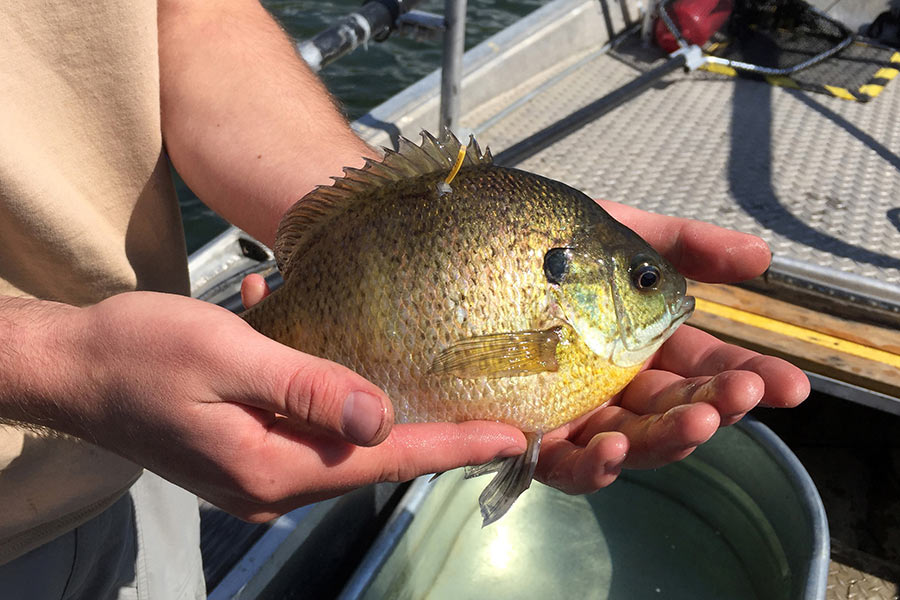
If you catch a fish with one of these tags near its dorsal fin, clip the tag and then visit our website to enter a quick report about your fishing trip. You might win a $40 reward!
The reason why I don't have an advantage is because even though I have access to all the data — on fish sizes, population numbers and overall health — that information doesn't tell me anything about how easy it is to catch fish.
Fortunately, we're about to launch a study that might do exactly that. And if you help us, there's a chance you'll catch more than a fish! We're tagging 10% of the fish we stock at a handful of waterbodies, and 1% of those tagged fish will have an extra reward tag worth $40. So, if you catch a tagged fish — with or without a reward — we encourage you to visit our website and answer some simple questions about your fishing experience.
Another cool tool you can use and contribute to is the Fish Utah website. It's a place where you can rate your recent fishing trips, see the fishing forecasts, learn which baits are working best and find great new places to fish.
So, why are we trying these new survey tools and programs? It's all part of an effort to better understand what you want to see at Utah's fisheries and to see which survey methods are most effective.
Our traditional survey methods
Before we dive into the details of our latest, more experimental survey methods, it helps to understand how we currently survey anglers. Our fisheries teams do get some information about how easy it is to catch fish from surveys that we call creel surveys. Unfortunately, creel surveys are time consuming and quite expensive, so we perform a lot fewer creel surveys than we would like.
During creel surveys, we send biologists to reservoirs and streams, and those biologists interview anglers in person about their fishing experience. The time commitment is substantial. A traditional creel survey normally lasts for a year. During that year, the biologist goes to a water around four to six times per month and interviews anglers from sunrise to sunset during each visit.
To ensure that the survey is useful and valid, each biologist has to ask the exact same questions of every angler they encounter during the duration of the survey. As a result, creel surveys allow us to directly determine how anglers are doing.
The fact that creel surveys are expensive and time consuming is one of the reasons we do a lot of net and electrofishing surveys, which cost less and are quicker than creel surveys. And although these surveys tell us a lot about the number, size and health of fish in a waterbody, they tell us nothing about how easy it is to catch fish.
Regardless, net and electrofishing surveys are still very useful. We use these types of surveys to get information about non-game fish species or fish that are too small for anglers to catch. We also use net and electrofishing surveys to collect other pieces of information like fish age and diet.
Our assumption is that fishing will be good when the results of our net and electrofishing surveys show that a lake, reservoir or stream has lots of healthy fish. That assumption, however, isn't always true. Sometimes a water can have excellent fish populations, but fish are tough to catch because there is a lot of natural prey that fish focus on instead of the baits, lures or flies used by anglers. Other times, fish are just "educated" and difficult to catch.
In a perfect world, we would use more creel surveys — paired with net and electrofishing surveys — because all of these surveys provide us different kinds of data that supplement one another.
Unfortunately, the time and money required to run creel surveys prevents us from having access to angler experience information as often as we would like. When we have that information, we can make a lot of useful changes at a water to benefit you and the other people who fish there.
Our new high-reward tagging program
Our DWR fisheries team would like to have more angler experience data and has been looking at lower-cost, more rapid ways to collect information that is similar to what we collect during a traditional creel survey.
That's why we are starting a program this fall that will test another approach for collecting your fishing trip information. This program will provide random anglers a monetary reward of $40 for catching some tagged fish, and it is modeled after a program that Idaho Fish and Game has run successfully for the past 15 or so years.
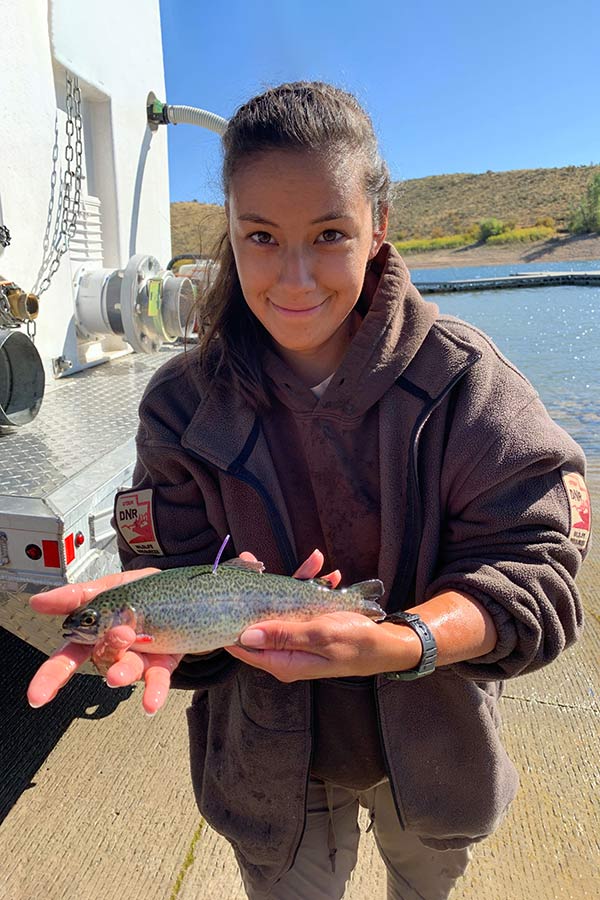
We are launching this tagged fish program as an experiment. If it's successful — and enough people share information about their fishing trips — we will expand this program to other waterbodies across the state.
For this program, 10% of the fish stocked into some waters will have a tag. If you break down the tagged fish further, 1% of the fish stocked will have a $40 reward and the other 9% won't have a reward. The tags will be easy to find because they are large, brightly colored and placed below the dorsal fin. The tag number and whether the fish has an accompanying cash reward is printed on the tag.
If you catch a tagged fish, please use scissors or nippers to carefully clip the tag (don't just pull the tag out of the fish). Then, visit our website (also printed on the tag) to enter your tag number and answer some questions about your fishing experience.
We ask all anglers who catch a tagged fish — regardless of whether it has a cash reward — to enter their information on the website. The information you report will be used to determine how many fish are being caught and whether anglers are satisfied.
This program will provide us with information that is similar to a creel survey, and even with the reward payments, this program will cost only about one-tenth as much as a traditional creel survey.
Because this is a more cost-effective method, we can collect angler experience information from more waters throughout the state. The information collected will help biologists adjust how many fish are stocked, how often waters are stocked and where fish are stocked.
In other words, the information you provide will help us make changes that will make fishing in Utah even better.
Another useful tool — the Fish Utah website
One other data-collection tool we're using is the relatively new Fish Utah website. Did you know that it allows you to rate the waters that you fish? And to find good fishing spots based on other anglers' ratings?
If you want to rate a water, click on the name of the waterbody that you fished and then click "Rate" in the top right corner of the box that pops up and describes the water. The questions asked in the rating questionnaire are similar to the questions we ask during a creel survey and on the new tagged-fish website.
There are two good reasons why you should rate your fishing experience on the Fish Utah website:
- Anglers can see the ratings provided on the website (it is the average rating on the information page for a water). You can use this information yourself to determine where the fishing is good and what flies, baits or lures are working best.
- We can use the data much like a creel survey to make fishing better in Utah.
Both anglers and the DWR get better information about waters when more people rate their fishing experience. So, we encourage everyone to please rate their fishing experiences!
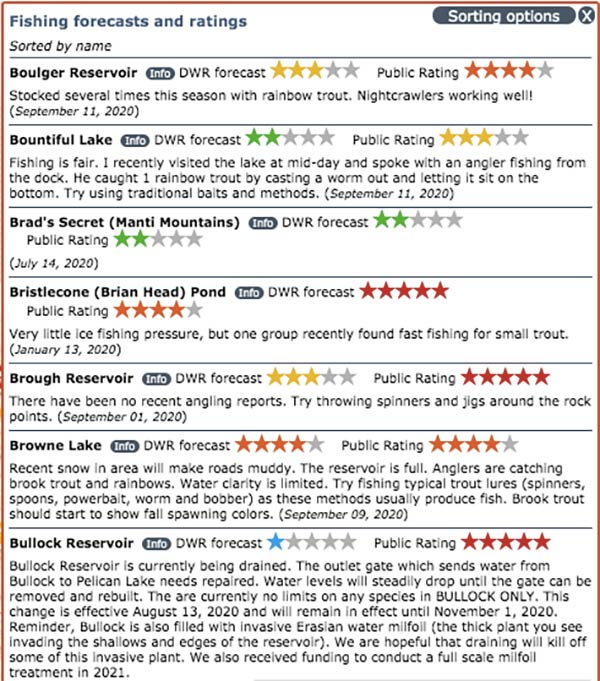
The Fish Utah website is a place where you can tell us how your fishing trip went, what baits or lures you used and whether you had a good experience.
The primary advantage of the Fish Utah rating data is that it does not cost the DWR any money to collect this information. Even better, we can collect angler experience information on every water in the state simultaneously.
Just like with the tagged fish program, the information collected from the Fish Utah website will help us improve the management of Utah's fisheries so you can enjoy better fishing!
Our fall 2020 experiment
Both the high-reward tagging program and the use of Fish Utah rating data are fairly new to the DWR. Creel surveys have been used worldwide for many decades, and we know that they provide us with excellent information.
A few states — including Idaho — have used the high-reward tagging program for years, but no one has ever determined how a high-reward tagging program and user-reported data on a website compare to a traditional creel survey.
We are going to do this comparison this fall. We have selected five community fisheries in northern Utah where we will stock reward-tagged fish. We will run a traditional creel survey at the same time on the same waters and also ask anglers to report their fishing experience on the Fish Utah website.
We will then compare the data collected from all three sources to determine how reliable the tagged fish data and the Fish Utah data are. If the data is comparable, we will expand the reward-tagging program in 2021 and will continue to encourage anglers to report their fishing experience on the Fish Utah website.
If comparable, the reward-tagging program and Fish Utah ratings will provide two additional, cost-effective tools for gauging anglers' success and satisfaction, and they will help us further improve the management of Utah's fisheries.
Collecting data through other online surveys

Visit the Fish Utah website during your next fishing trip and leave a rating.
In addition to creel surveys, reward-tagged fish and the Fish Utah site, we sometimes use online surveys as a way for the public to provide feedback about fishing in Utah.
We have recently used online surveys to gauge angler support for fishing regulation changes that are being proposed in 2021. We also used online surveys to learn the opinions of anglers who fish Strawberry Reservoir and waters within Tooele County. And, because of this year's unique circumstances, we just launched a survey to learn more about how COVID-19 has impacted Utah's anglers.
We also run a survey every five years in collaboration with Utah State University to assess trends in angler preferences in Utah.
All of these surveys provide us valuable information that supplements what we learn during other surveys and helps us further improve fishing in Utah.
Why your feedback is important
At the DWR, we want to make sure that our fisheries-management decisions are data-driven. We can collect virtually unlimited data about our fisheries using nets and electrofishing. The problem with that data is that it does not always accurately reflect what you see when you go fishing.
The reason why creel surveys, the reward-tagged fish program, the Fish Utah ratings and online surveys are important is because the data they provide comes from you — the fishing public. Having access to more data directly from anglers will only help us improve how we manage Utah's fisheries.
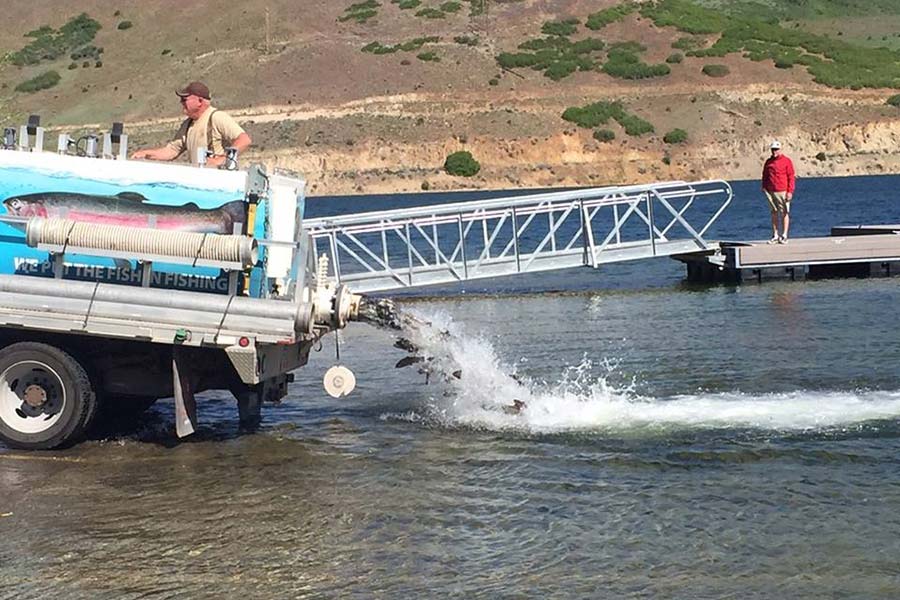
When you tell us how your fishing trips went — through a creel survey, tagged fish program or the Fish Utah website — we can use that information to adjust stocking and management and improve fishing for everyone.
This information lets us know where our fish stocking is working — and where it isn't working — and it helps us identify how we need to change the management of our fisheries to help anglers be more successful.
So we're asking for your help. Please report any tagged fish, enter ratings on the Fish Utah website, and participate in our online surveys. Your feedback is valuable to us, and it definitely helps us make your fishing trips more productive and enjoyable!

